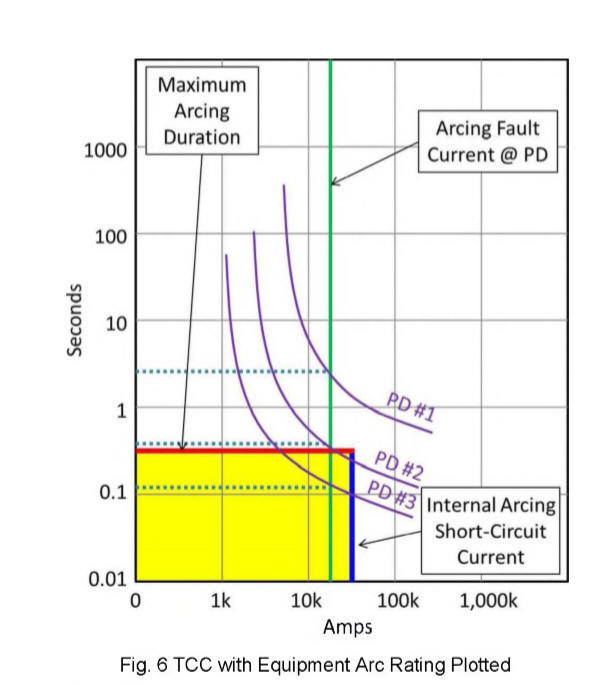Hello Everyone,
I was reading an IEEE paper published a few years ago regarding Arc Resistant Switchgear
The paper discusses an Arc Faul event in an Arc resistant gear and a visual inspection that can be performed in time current plots to ensure the equipment can truly operate as an arc-resistant switchgear
In the paper, the authors claim that if the equipment can safely operate when within the arc-resistant design region (see attached images and paper)
The Arc Resistant design region is drawn as the intersection of a horizontal line using the Arc Current rating and another vertical line at the arc duration rating of the equipment in a TCC
This is then evaluated against the protective device curve and the arc current flowing through it
In their sample evaluation, they mention that the as long as the clearing time of protective device does not exceed the Arc duration rating and Internal arcing current then the equipment will operate correctly
Now my question is can we truly say the equipment won't behave as a arc-resistant switchgear if the Arcing duration is exceeded but the arc current rating is not?
Does anyone out there have any references or experience with this evaluation?
Any feedback would be appreciated, thanks!
Link to the IEEE Paper:

I was reading an IEEE paper published a few years ago regarding Arc Resistant Switchgear
The paper discusses an Arc Faul event in an Arc resistant gear and a visual inspection that can be performed in time current plots to ensure the equipment can truly operate as an arc-resistant switchgear
In the paper, the authors claim that if the equipment can safely operate when within the arc-resistant design region (see attached images and paper)
The Arc Resistant design region is drawn as the intersection of a horizontal line using the Arc Current rating and another vertical line at the arc duration rating of the equipment in a TCC
This is then evaluated against the protective device curve and the arc current flowing through it
In their sample evaluation, they mention that the as long as the clearing time of protective device does not exceed the Arc duration rating and Internal arcing current then the equipment will operate correctly
Now my question is can we truly say the equipment won't behave as a arc-resistant switchgear if the Arcing duration is exceeded but the arc current rating is not?
Does anyone out there have any references or experience with this evaluation?
Any feedback would be appreciated, thanks!
Link to the IEEE Paper:

